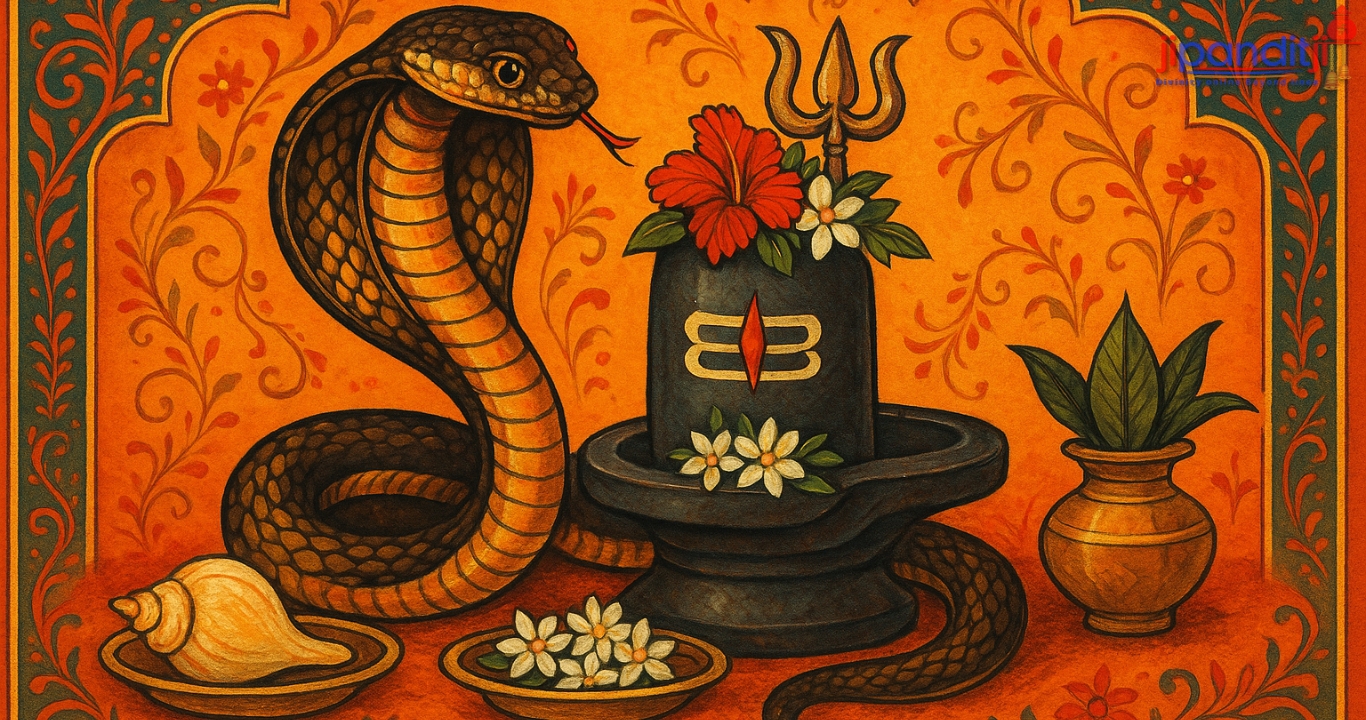Nag Panchami 2025: 7 Sacred Rituals That Transform Your Spiritual Journey Forever

Nag Panchami stands as one of India’s most revered festivals, captivating millions of devotees who honor serpent deities with unwavering faith. This ancient celebration transcends mere ritual observance, offering profound spiritual transformation that connects practitioners with divine serpent energy. Moreover, understanding Nag Panchami’s significance empowers you to participate meaningfully in this sacred tradition while experiencing its transformative benefits.
The festival occurs annually during the fifth day of Shukla Paksha in the month of Shravan, typically falling between July and August. Furthermore, devotees across India and Nepal celebrate this auspicious occasion with elaborate prayers, offerings, and traditional ceremonies that have been preserved for centuries.
The Sacred Origins of Nag Panchami
Ancient Mythology and Historical Significance
Nag Panchami originates from ancient Hindu scriptures, particularly the Puranas, which describe serpents as powerful cosmic forces. According to sacred texts, Lord Krishna’s victory over the serpent Kaliya represents the triumph of divine consciousness over negative energies. Additionally, the Mahabharata recounts how Janamejaya’s snake sacrifice was stopped through divine intervention, establishing the foundation for serpent worship.
Archaeological evidence suggests that serpent worship dates back over 5,000 years, making it one of humanity’s oldest religious practices. Consequently, this festival connects modern practitioners with their ancestral spiritual heritage while maintaining its relevance in contemporary times.
Spiritual Symbolism and Divine Connection
Serpents symbolize Kundalini energy, the dormant spiritual force residing within every individual. Therefore, worshipping serpent deities during Nag Panchami activates this transformative energy, leading to heightened consciousness and spiritual awakening. Furthermore, snakes represent regeneration, wisdom, and protection, making them powerful spiritual allies for devotees seeking growth.
7 Essential Rituals That Define Nag Panchami Celebrations
1. Sacred Fasting and Purification
Devotees observe strict fasting from sunrise to sunset, consuming only fruits, milk, and water. This purification process cleanses the body and mind, preparing practitioners for divine communion with serpent energies. Additionally, fasting demonstrates devotion and self-discipline, essential qualities for spiritual advancement.
2. Elaborate Puja Ceremonies
Traditional worship involves offering milk, honey, flowers, and sweets to snake idols or live serpents. Devotees chant specific mantras while performing these rituals, creating powerful vibrations that attract divine blessings. Moreover, the puja ceremony strengthens the connection between worshipper and deity, facilitating spiritual transformation.
3. Temple Visits and Community Worship
Visiting ancient serpent temples amplifies the festival’s spiritual impact through collective devotion. Famous temples like Nageshwar in Gujarat and Mannarsala in Kerala witness thousands of pilgrims during Nag Panchami. Furthermore, community worship creates positive energy fields that benefit all participants.
4. Traditional Art and Decorations
Creating intricate rangoli designs featuring serpent motifs enhances the festival’s aesthetic appeal while invoking divine presence. Additionally, decorating homes with flowers, leaves, and traditional lamps transforms living spaces into sacred sanctuaries worthy of serpent deities.
5. Sacred Thread Ceremonies
Tying protective threads blessed during Nag Panchami provides ongoing spiritual protection throughout the year. These consecrated threads serve as constant reminders of divine grace while safeguarding devotees from negative influences.
6. Charitable Activities and Community Service
Performing acts of charity during Nag Panchami multiplies the festival’s spiritual benefits while serving society. Devotees often distribute food, medicine, and clothing to the underprivileged, embodying the compassionate nature of serpent deities.
7. Meditation and Spiritual Contemplation
Engaging in deep meditation while focusing on serpent symbolism facilitates profound spiritual experiences. This practice awakens dormant consciousness while establishing lasting connections with divine serpent energies.
Regional Variations and Cultural Significance
North Indian Traditions
Northern states celebrate Nag Panchami with elaborate processions, folk dances, and community feasts. Rajasthan and Gujarat feature spectacular snake charmers’ performances that demonstrate the harmonious relationship between humans and serpents. Additionally, these regions organize competitive events showcasing traditional arts and crafts related to serpent worship.
South Indian Customs
Southern states emphasize temple worship and classical music performances during Nag Panchami. Kerala’s Mannarsala Temple conducts special ceremonies where devotees offer prayers for fertility and prosperity. Moreover, Tamil Nadu’s ancient temples feature intricate carvings depicting serpent deities in various forms.
Eastern Celebrations
Bengal and Odisha celebrate Nag Panchami through elaborate cultural programs featuring traditional dances and theatrical performances. These states integrate the festival with local folk traditions, creating unique celebrations that blend ancient practices with regional customs.
Modern Relevance and Environmental Conservation
Wildlife Protection Initiatives
Contemporary Nag Panchami celebrations increasingly emphasize wildlife conservation and environmental protection. Many organizations use this festival to raise awareness about declining snake populations and habitat destruction. Furthermore, educational programs during the festival promote coexistence between humans and wildlife.
Scientific Understanding and Traditional Wisdom
Modern science validates many traditional beliefs about serpents’ ecological importance as natural pest controllers. Therefore, Nag Panchami serves as an excellent platform for combining ancient wisdom with contemporary environmental awareness.
Health Benefits and Therapeutic Aspects
Psychological Well-being
Participating in Nag Panchami rituals reduces stress, anxiety, and negative emotions through focused spiritual practice. The festival’s meditative aspects promote mental clarity while strengthening emotional resilience. Additionally, community participation fosters social connections that support psychological health.
Physical Health Advantages
Traditional fasting during Nag Panchami provides numerous health benefits including improved digestion, enhanced immunity, and cellular regeneration. Moreover, the physical activities associated with festival preparations promote fitness and vitality.
Nag Panchami represents far more than a religious festival—it embodies humanity’s profound connection with nature’s wisdom and divine consciousness. Through its sacred rituals, spiritual practices, and community celebrations, this ancient tradition continues transforming lives while preserving invaluable cultural heritage. Furthermore, embracing Nag Panchami’s teachings empowers individuals to achieve spiritual growth, environmental awareness, and holistic well-being.
The festival’s enduring relevance demonstrates how ancient wisdom remains applicable in modern times, offering practical solutions for contemporary challenges. Therefore, participating in Nag Panchami celebrations—whether through traditional rituals or contemporary adaptations—provides access to transformative spiritual experiences that enrich both personal and collective consciousness.
As we move forward, Nag Panchami’s message of harmony between humans and nature becomes increasingly vital for global sustainability and spiritual evolution. Consequently, this sacred festival serves as a powerful catalyst for positive change, inspiring practitioners to embrace both divine connection and environmental responsibility.

